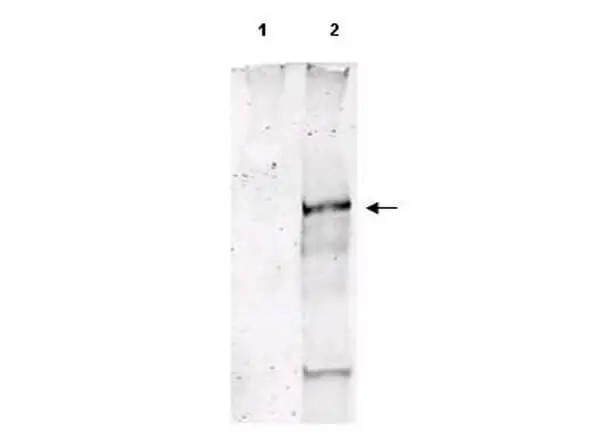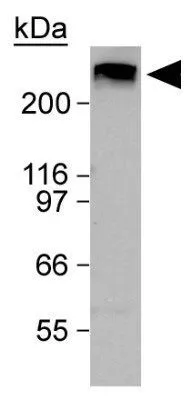
ATM (phospho Ser1981) antibody
GTX48650
ApplicationsWestern Blot, ELISA
Product group Antibodies
TargetATM
Overview
- SupplierGeneTex
- Product NameATM (phospho Ser1981) antibody
- Delivery Days Customer9
- Application Supplier NoteWB: 1:500-1:2000. ELISA: 1:2000-1:10000. *Optimal dilutions/concentrations should be determined by the researcher.Not tested in other applications.
- ApplicationsWestern Blot, ELISA
- CertificationResearch Use Only
- ClonalityPolyclonal
- Concentration1 mg/ml
- ConjugateUnconjugated
- Gene ID472
- Target nameATM
- Target descriptionATM serine/threonine kinase
- Target synonymsAT1, ATA, ATC, ATD, ATDC, ATE, TEL1, TELO1, serine-protein kinase ATM, A-T mutated, AT mutated, TEL1, telomere maintenance 1, homolog, ataxia telangiectasia mutated, serine/threonine kinase ATM
- HostSheep
- IsotypeIgG
- Protein IDQ13315
- Protein NameSerine-protein kinase ATM
- Scientific DescriptionATM, the gene mutated in the hereditary disease ataxia-telangiectasia, codes for a protein kinase that acts as a master regulator of cellular responses to DNA double-strand breaks. ATM is normally inactive and the question of how it is activated in the event of DNA damage (due to ionizing radiation for instance) is central to understanding its function. ATM protein is now shown to be present in undamaged cells as an inactive dimer. Low doses of ionizing radiation, which induce only a few DNA breaks, activate at least half of the total ATM protein present, possibly in response to changes in chromatin structure. The ATM gene encodes a 370-kDa protein that belongs to the phosphoinositide 3-kinase (PI(3)K) superfamily, but which phosphorylates proteins rather than lipids. The 350-amino-acid kinase domain at the carboxy terminus of this large protein is the only segment of ATM with an assigned function. Exposure of cells to IR triggers ATM kinase activity and this function is required for arrests in G1, S and G2 phases of the cell cycle. Several substrates of the ATM kinase participate in these IR-induced cell-cycle arrests. These include p53, Mdm2 and Chk2 in the G1 checkpoint; Nbs1, Brca1, FancD2 and SMC1 in the transient IR-induced S-phase arrest; and Brca1 and hRad17 in the G2/M checkpoint. This antibody is similar to the rabbit host antibody discussed by Bakkenist, C. J. & Kastan, M. B. in Nature 421, 499-506 (2003).
- Storage Instruction-20°C or -80°C,2°C to 8°C
- UNSPSC12352203



![WB analysis of 40 ug of lysate from HeLa cells untreated (Lane 1), treated with 10uM Camptothecin for 4h (Lane 2) or 12h (Lane 3) using GTX15666 ATM (phospho Ser1981) antibody [10H11]. Dilution : 1:1000](https://www.genetex.com/upload/website/prouct_img/normal/GTX15666/GTX15666_1510_WB_w_23060620_543.webp)

![WB analysis of irradiate or peroxidase treated human fibroblast lysate using GTX30636 ATM (phospho Ser1981) antibody [10H11.E12].](https://www.genetex.com/upload/website/prouct_img/normal/GTX30636/GTX30636_1445_WB_w_23060722_646.webp)

![ELISA analysis of antigen using GTX60404 ATM antibody [5C5]. Red : Control antigen 100ng Purple : Antigen 10ng Green : Antigen 50ng Blue : Antigen 100ng](https://www.genetex.com/upload/website/prouct_img/normal/GTX60404/GTX60404_20170912_ELISA_w_23061123_899.webp)